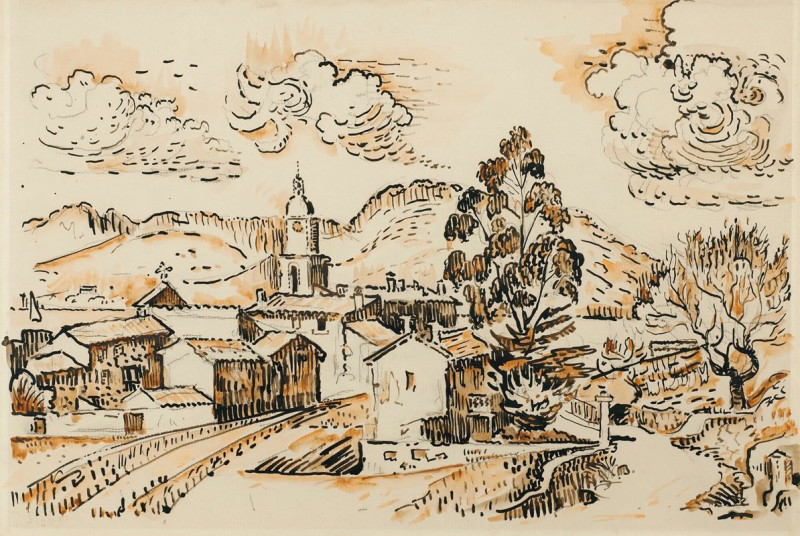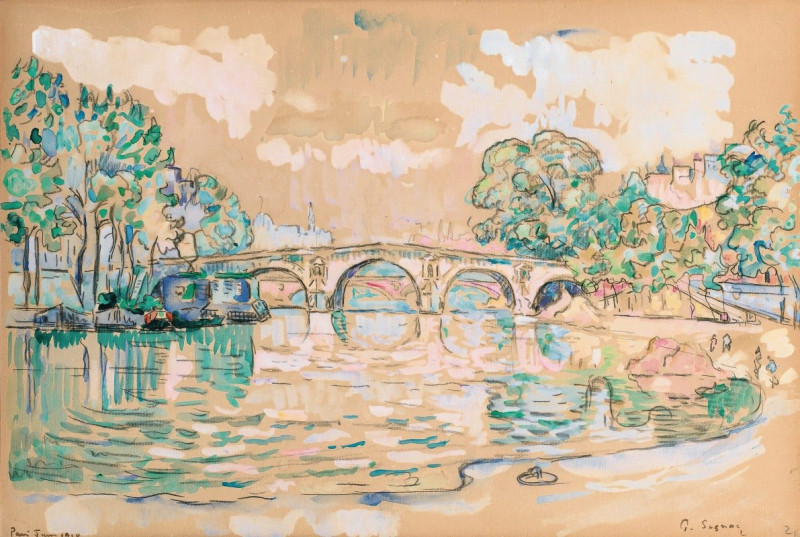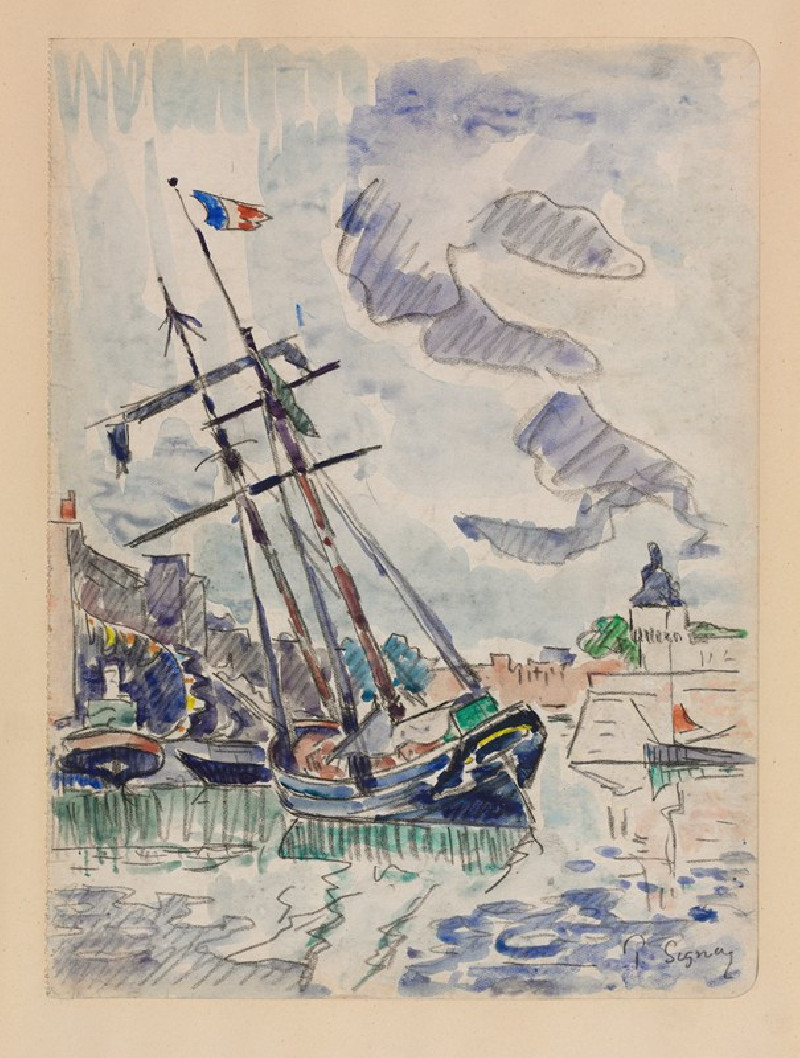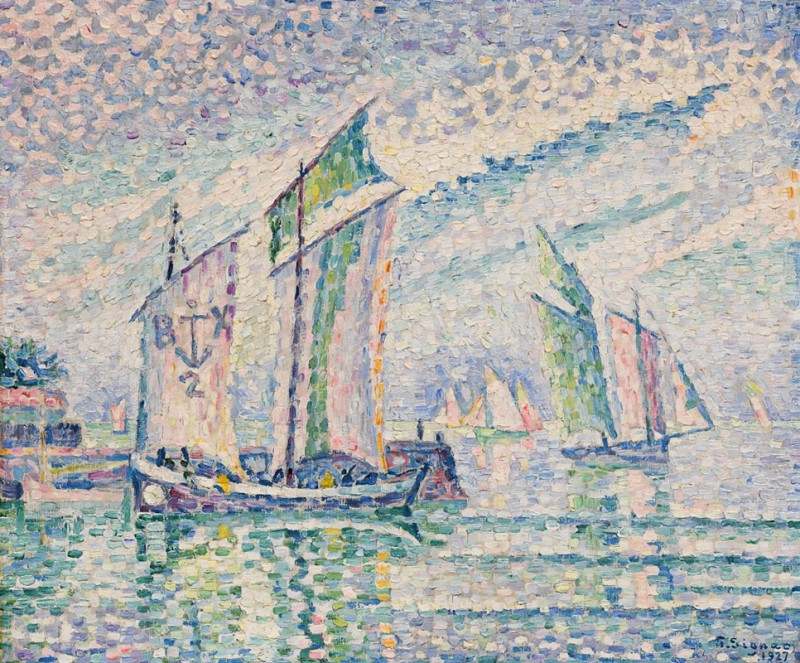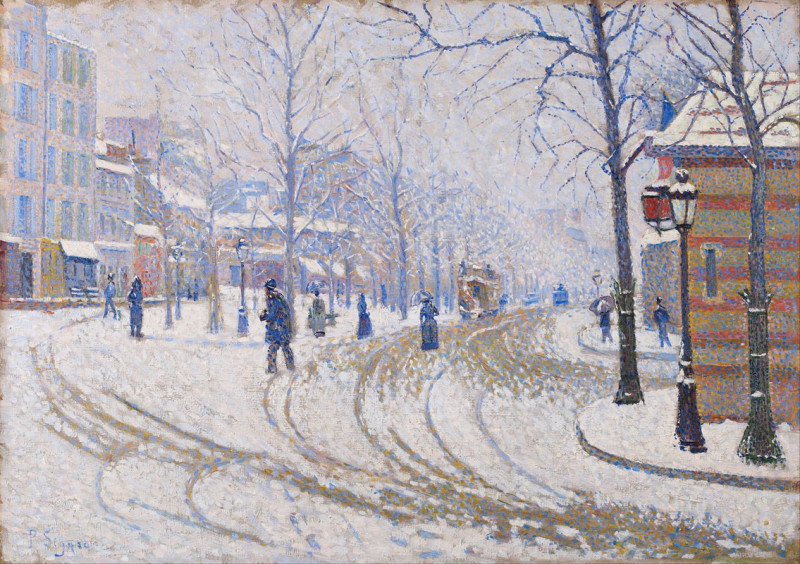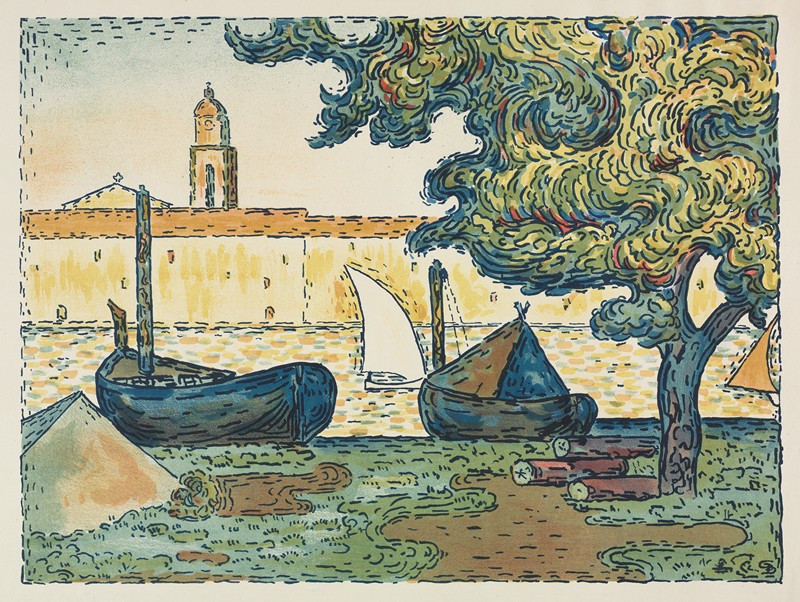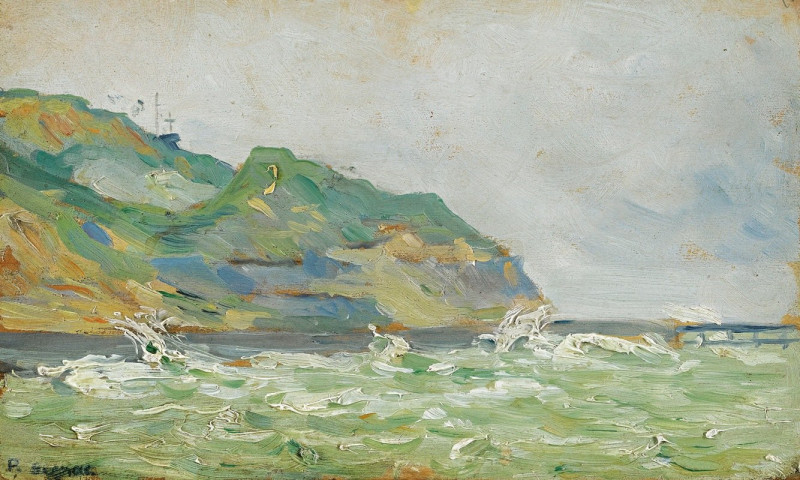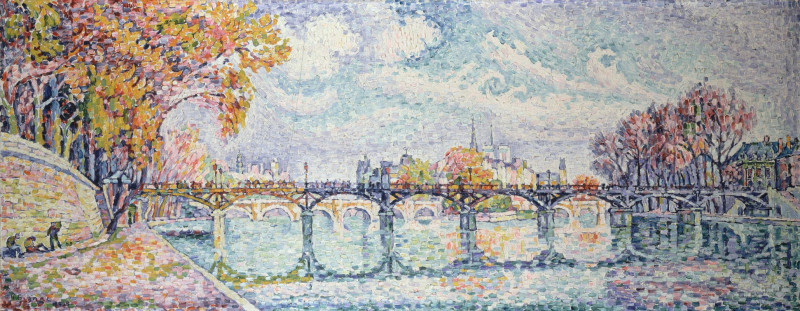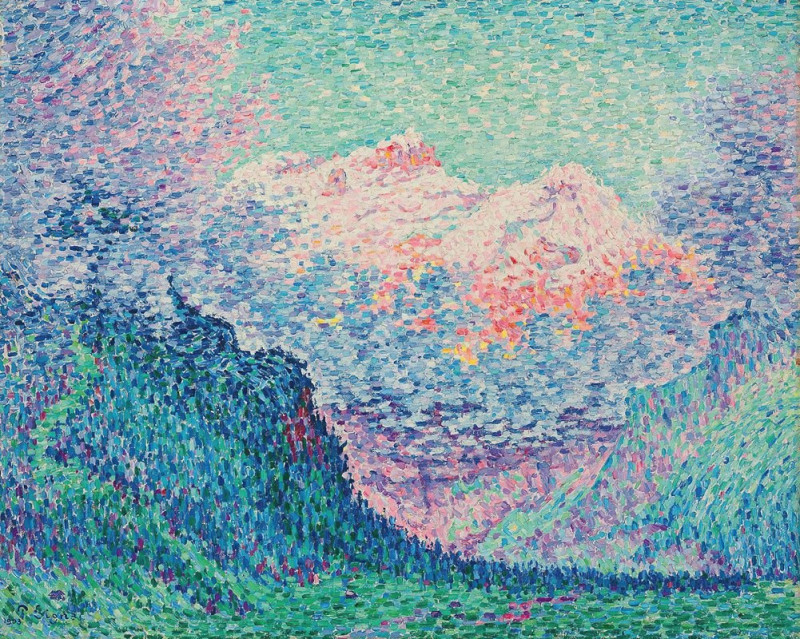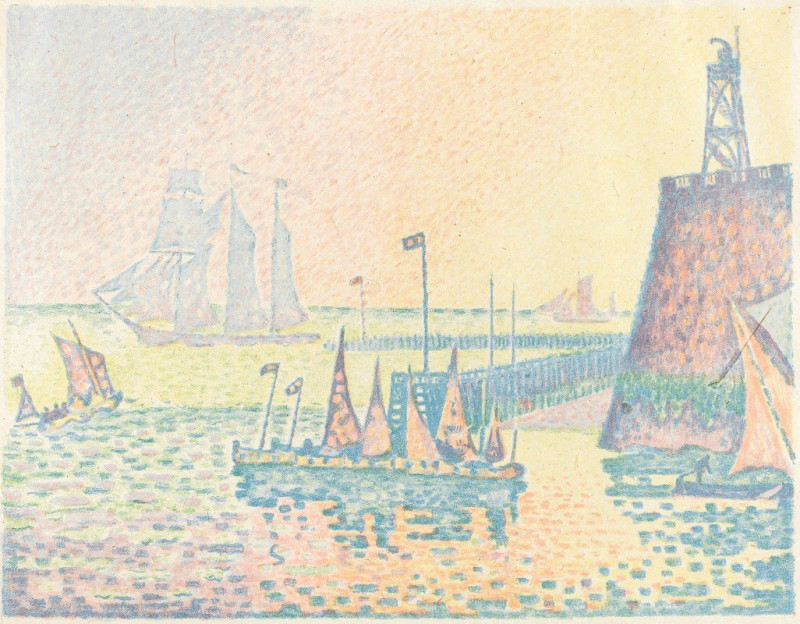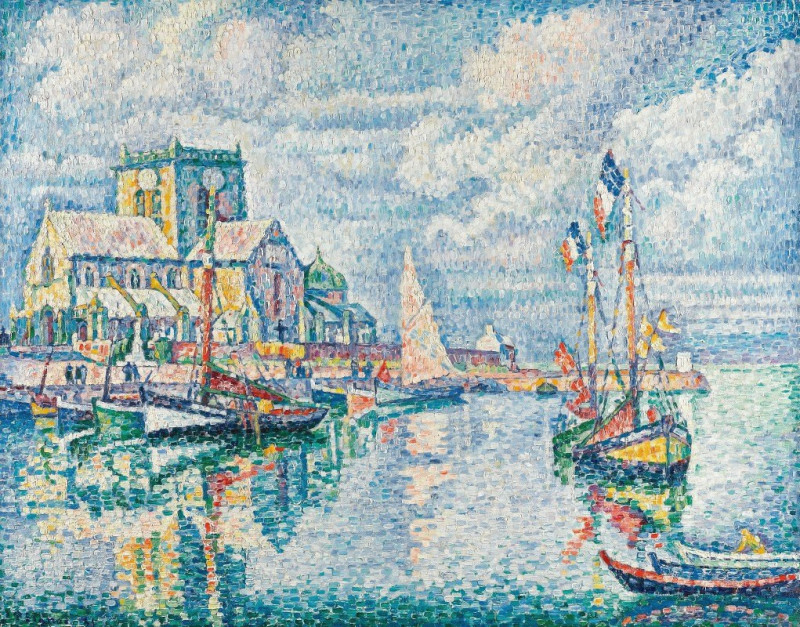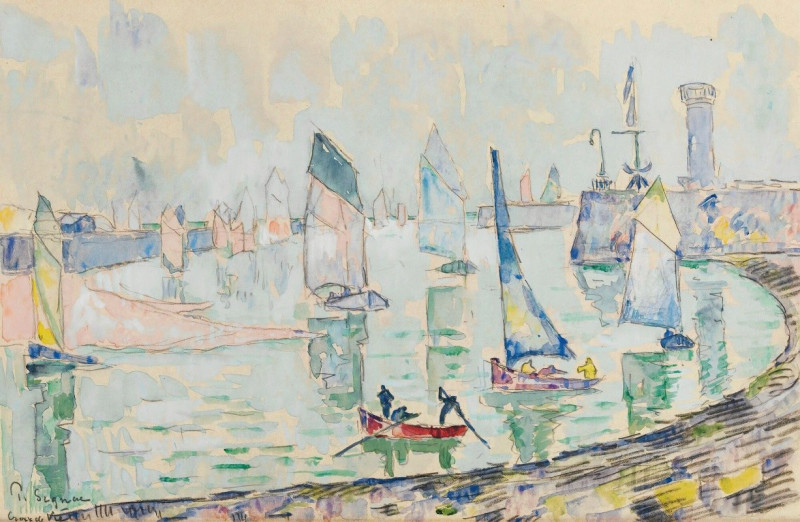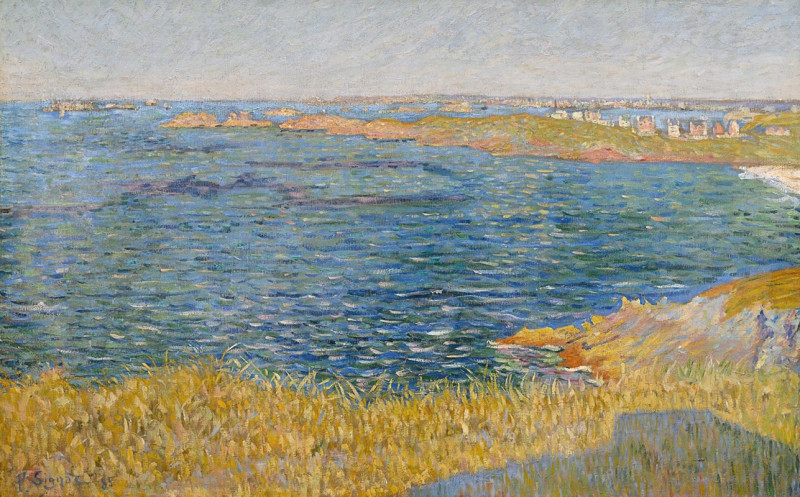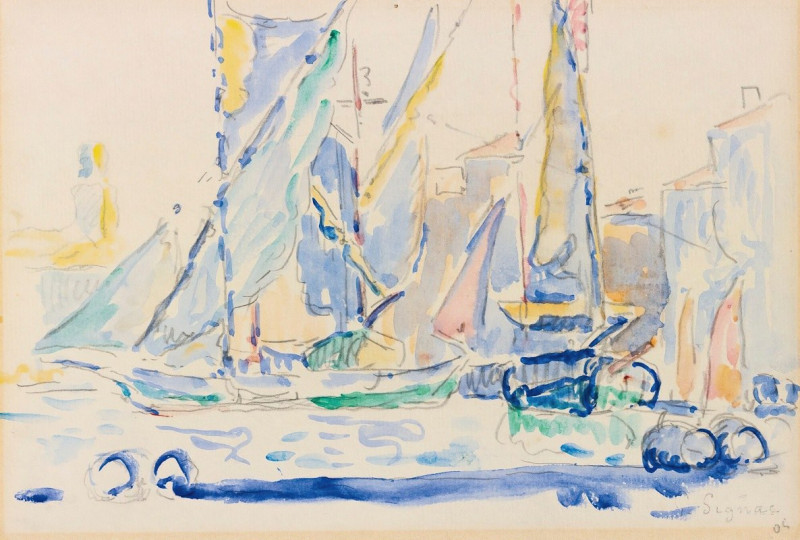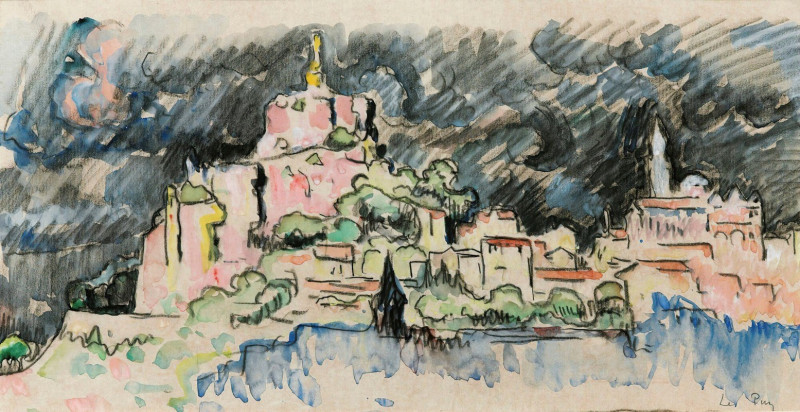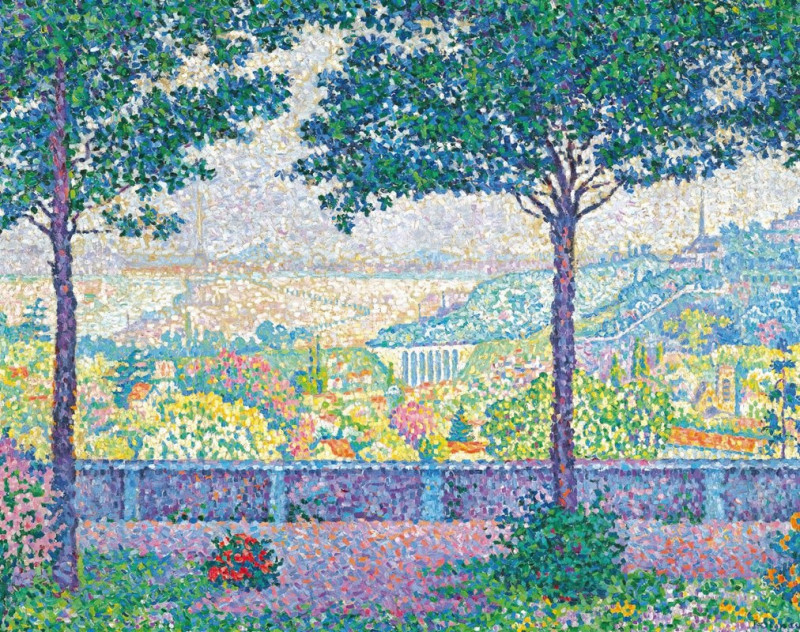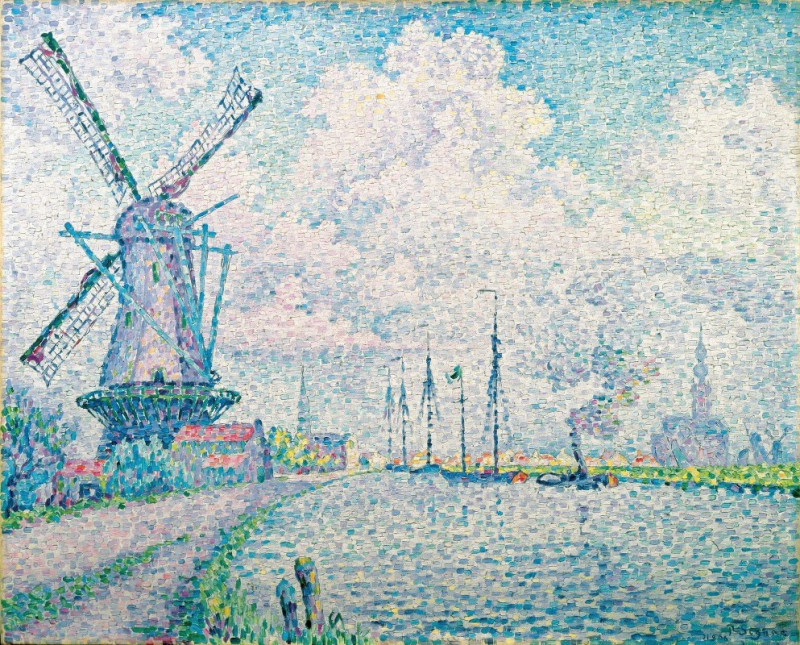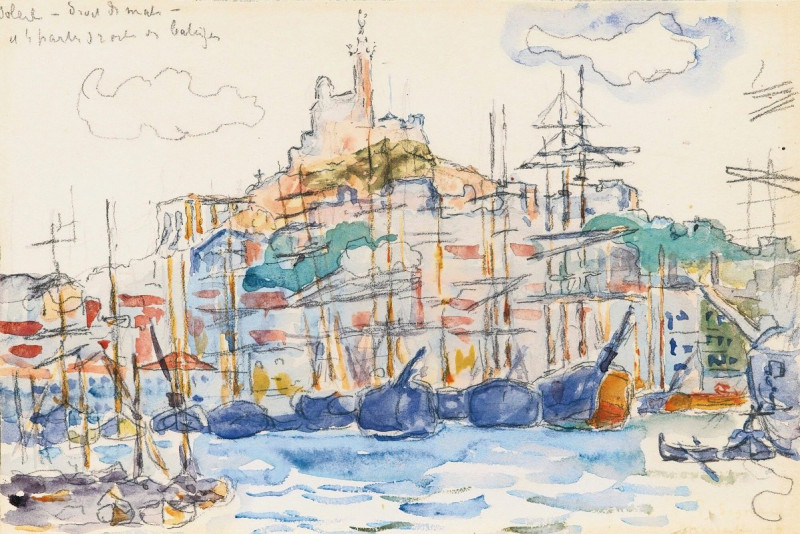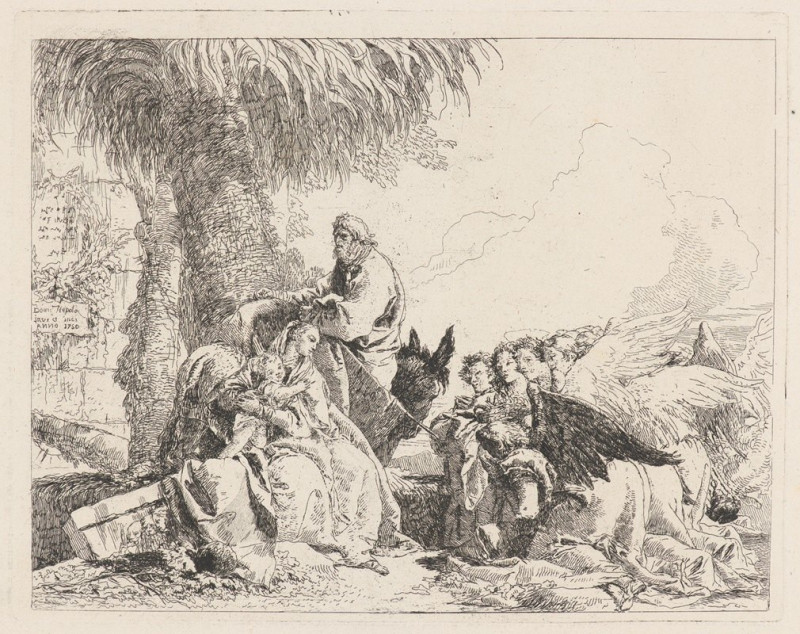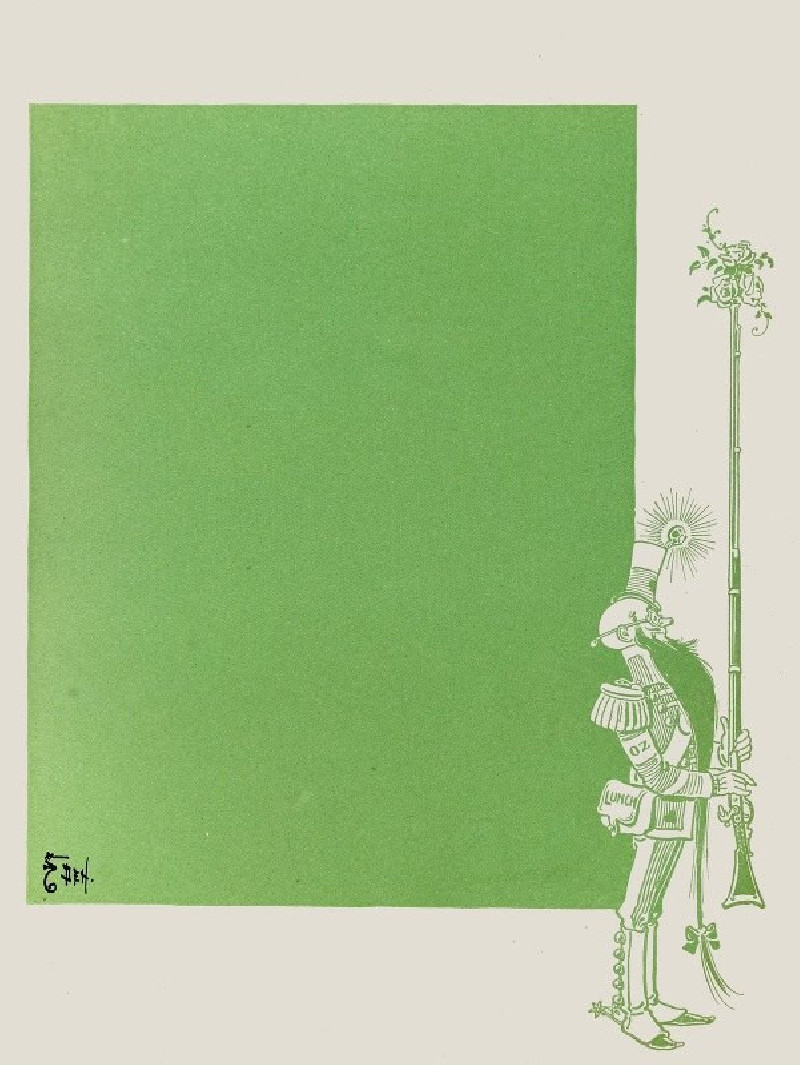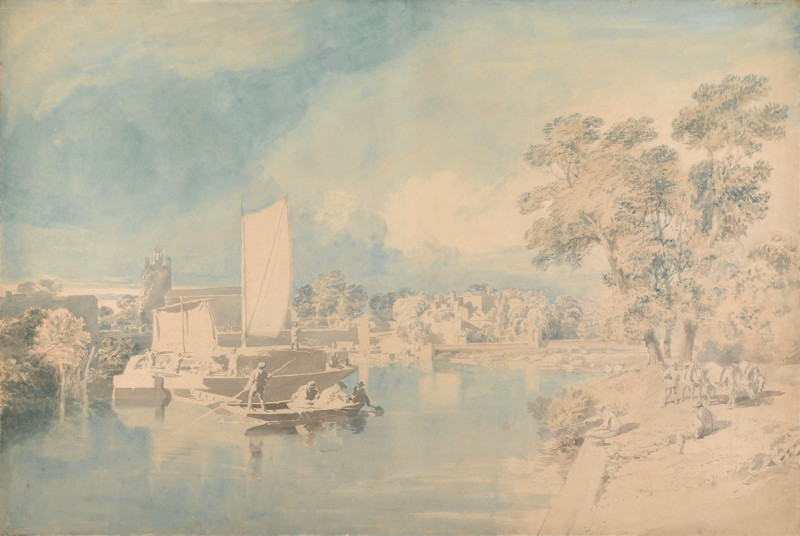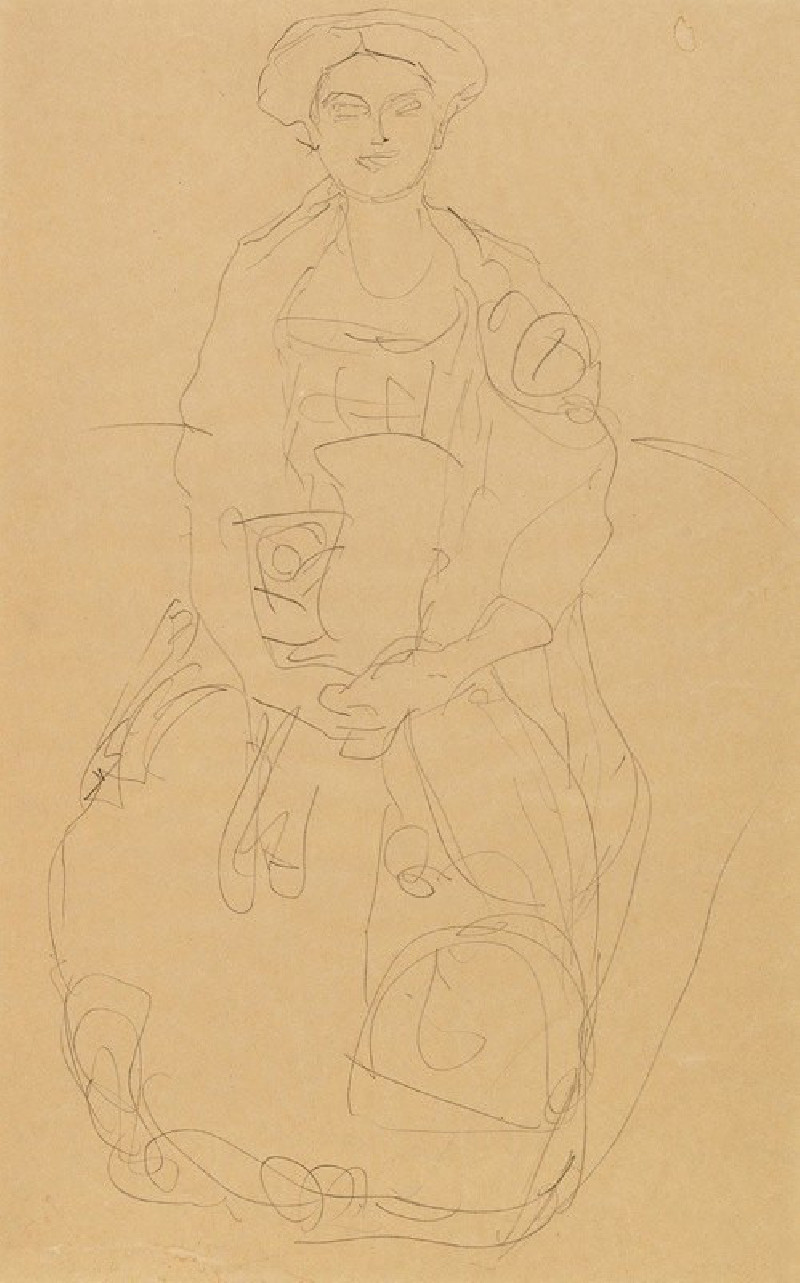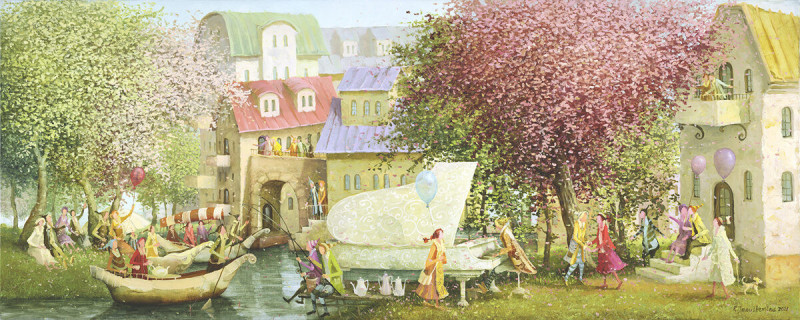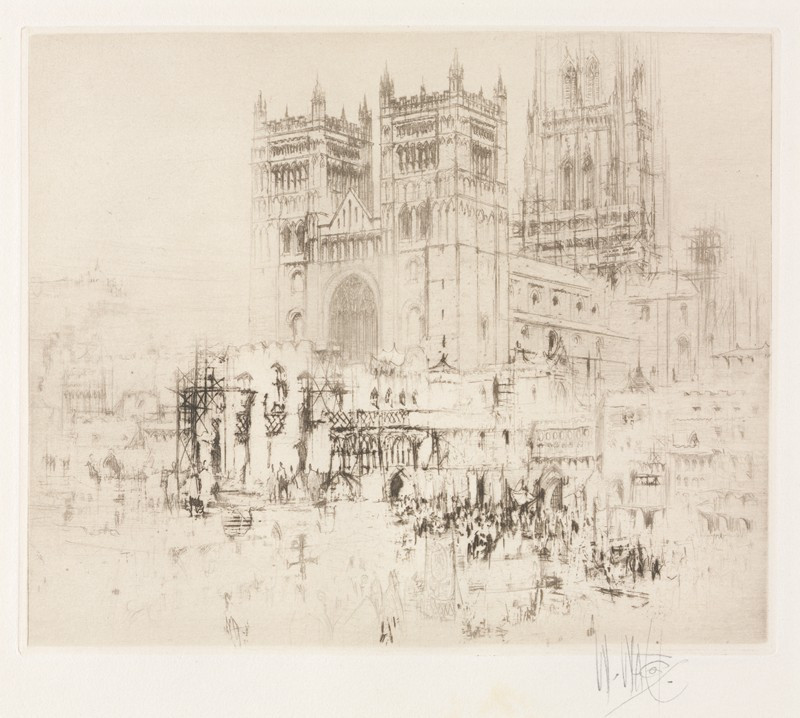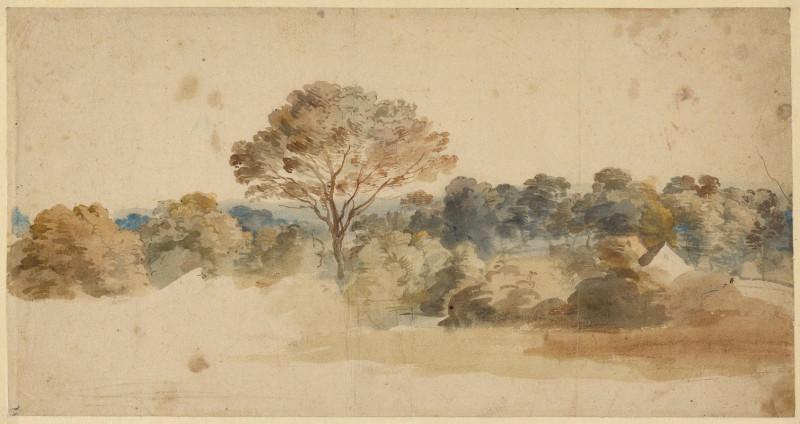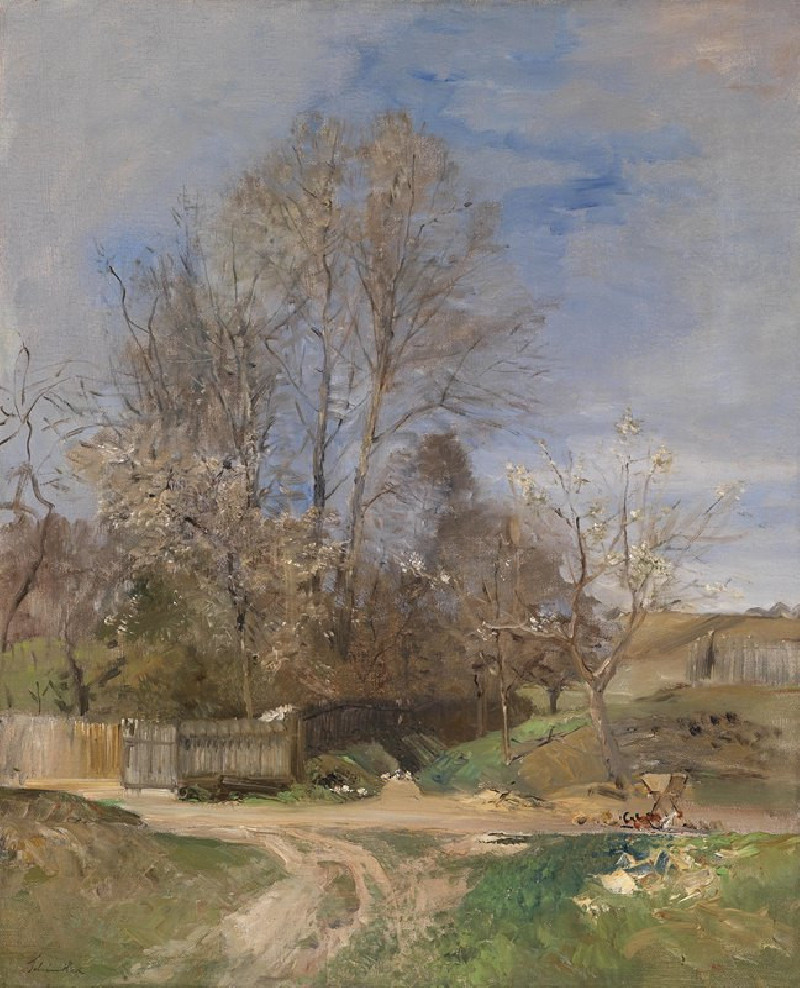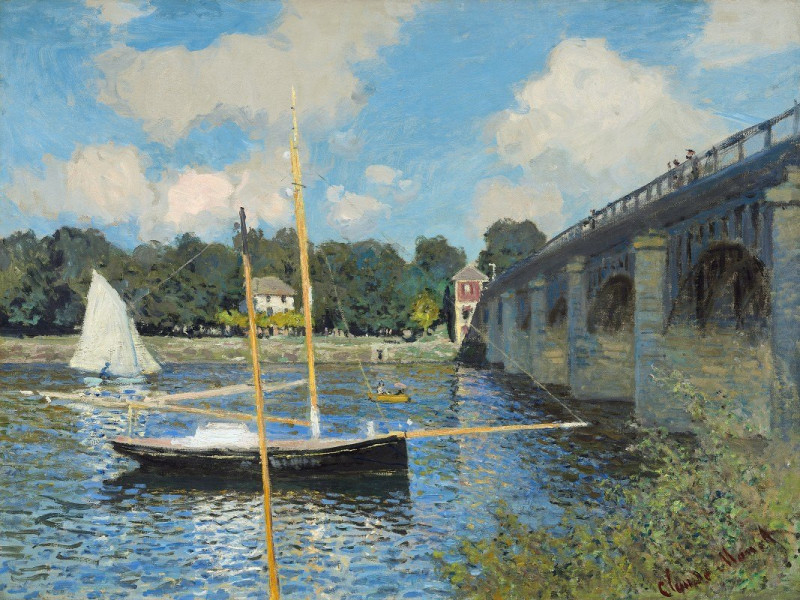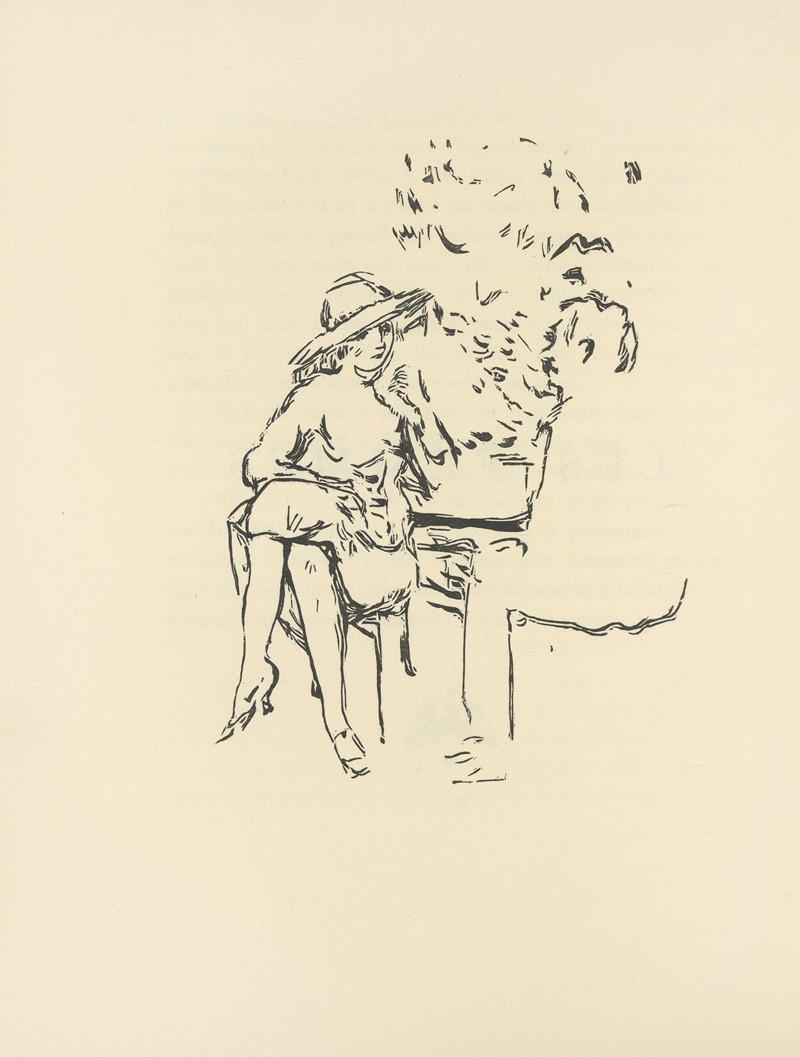La salle à manger (1886 - 1887)
Technique: Giclée quality print
Recommended by our customers
More about this artwork
Paul Signac's "La salle à manger" is a captivating painting that invites viewers into an intimate dining scene. Rendered in Signac's signature pointillist style, this work is composed of countless small dots of color that harmoniously blend to create a luminous effect. The scene is set in a dining room where soft light filters through tall windows, illuminating the space with a tranquil glow.Centered in the composition are two figures seated at a round table adorned with a white tablecloth. One figure, an elderly man with a thoughtful expression, is positioned prominently at the forefront. He is dressed in a dark suit and appears to be engaging in a quiet moment of contemplation. Across from him sits a younger figure, perhaps a family member, who delicately sips from a teacup, her gaze lowered in serene concentration. A maid, standing in the background, attentively observes the pair, adding a sense of everyday routine and service to the scene.The room is decorated with understated elegance—a potted plant adds a touch of greenery, while a sideboard showcases decorative plates, enhancing the domestic charm. The overall atmosphere of "La salle à manger" exudes a peaceful, almost meditative quality, inviting viewers to reflect on the calm and quiet moments of domestic life.Through his masterful use of color and meticulous dot technique, Paul Signac not only captures a moment in time but also evokes the emotional depth and tranquility of a family gathering.
Delivery
Returns
Paul Signac (1863-1935) was a French Neo-Impressionist painter. Together with Georges Seurat, Signac developed the Pointillism style. He was a passionate sailor, bringing back watercolor sketches of ports and nature from his travels, then turning them into large studio canvases with mosaic-like squares of color. He abandoned the short brushstrokes and intuitive dabs of color of the impressionists for a more exact scientific approach to applying dots with the intention to combine and blend not on the canvas, but in the viewer's eye.




